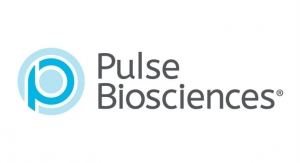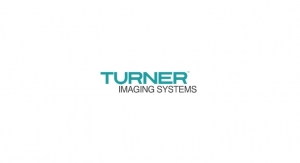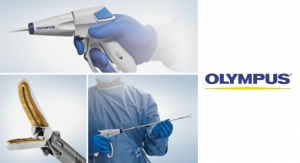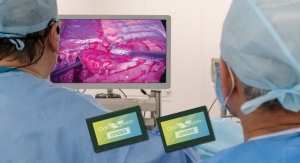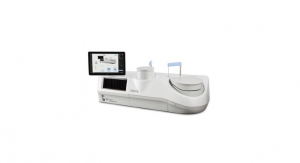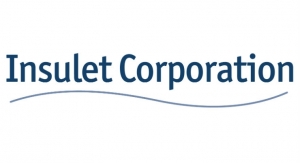David C. Robson, Principal, Robson Advisors07.26.18
Introducing a product involves myriad best guesses and estimations. There is often no way to adequately know everything in advance of release. A design team can conduct research and user evaluations and follow best practices to anticipate user needs, features, manufacturing plans, business cases, and regulatory concerns. But those results are always imperfect and, after time in the market, often reveal a somewhat “misbalanced” solution.
Most entrepreneurs prefer to leave the new product configuration alone so the company can begin to recoup its investment. After all, years of effort have been invested with hundreds of thousands or millions of dollars. Investors are eager to see returns, and development fatigue can pervade the organization. However, it is better to immediately start design refinement once real-field experiences and reports arrive and a company senses business success.
Once a product has been introduced and gains a following, the company starts collecting feedback and finding items that didn’t work as intended. This may bring the decision to develop and release a revision largely similar to the original, with a series of improvements and enhancements. Generally, these aren’t intended to change the clinical treatment or indications for use. This “second-generation” design solution allows the company to rebalance the product’s configuration, enabling it to be more successful.
A second-generation development effort can elicit big benefits, solidify a company’s future, keep competitors at bay, and improve “design balance.” First-generation devices should “prove clinical and market potential.” The second generation focuses on “scaled production and profit generation.” These priorities aren’t the same and generally can’t be combined in one design solution.
There are two ways to examine and justify second-generation development: things to fix from a compromise-laden and often resource-constrained first-generation solution and things to overtly improve in the second-generation configuration. These are effectively two sides of the same coin, but the topic is better considered by distinguishing between them.
Product design should always focus on striking the “best” balance between competing and conflicting priorities and objectives. But when a company introduces a new-to-market product, there are pressures limiting the ability to embody the ideally balanced solution:
Funding constraints and other existential threats. If a company runs out of money before release, the product and perhaps the company cease to exist. For startup companies especially, the best balance for a first-generation solution is “get to revenue!” Everything else can wait. Once revenue is produced, a company should ideally be able to fund the second-generation solution, which is better for long-term success.
Unclear and unknown user needs and patterns. Even with disciplined field observation and user evaluation, it isn’t easy to anticipate how users will interact with a product or potential secondary and tertiary procedural adaptations to a new device. A device succeeding in its primary function may benefit from adjustments allowing further savings of procedure time or perhaps information being collected. For instance, a battery-powered instrument may enable remote treatment instead of a hospital visit.
Unneeded clinical and functional features. Some features may be unnecessary or unwanted. This should not be disheartening, especially when considering how much the product got right—often the vast majority.
Needed clinical and functional features that could be added. This will likely have regulatory implications and require more than simple adjustments. Clinicians may provide feedback that the product is “almost right” and could be highly successful with additional capabilities. That’s not to say the initially released version is no good; just that it could be better and more easily adopted with some functional tweaks.
High cost of goods model. Introducing a first-generation solution is often coupled with time and budget constraints not allowing for the most cost-efficient design. Part refinements, part count reduction, supply chain configuration refinements, and vendor negotiations help improve the bottom line even with modest design changes.
Manufacturing difficulties. Products are often released with awkward manual assembly processes, extra inspection steps, and other sprinkled inefficiencies. Fixtures may have proven reliability, but perhaps weren’t designed for regular, constant work cycles. The second-generation effort should aim to streamline manufacturing.
Quality challenges. Even with an excellent design and quality team, a company may need to limp through extra inspections and unacceptable scrap rates to commercialize the first-generation product. Sometimes the best dimensional tolerancing and most careful vendor selection can still lead to unexpected and unheard of issues to handle via quality inspection and testing.
Human factors difficulties. Although the FDA and EU have mandated better processes for accommodating human factors and usability needs, opportunities for improvement will arise once the product is released. The HF, ID, and Usability evaluation teams should observe how the product is being used and compare against original research and assumptions to detect gaps. Further, the team should observe clinicians not considered early adopters or key opinion leaders to determine improvements for the broader user audience.
Small production quantities. Except on very rare occasions, a sales team’s rollout plan driving procurement and manufacturing planning is a best guess and could be wildly off—hopefully in the positive direction. As a result, a production line and supply chain balanced for small lot sizes must be re-evaluated and rebalanced. These adjustments can influence the design, especially when anticipating transition from intermittent lot builds to full-scale mass production.
Unclear reimbursement model. Every medical device company wants the reimbursement plan figured out and approved before moving to production. Some won’t even proceed into development until this is nailed down. That’s not always possible, especially with a new-to-market treatment. Once first-generation clinical effectiveness and market acceptance is confirmed, changes may be needed in the second generation to better serve reimbursement methods.
In blame-focused companies, the above could be the “what did we get wrong in our initial launch” list. This isn’t its intention and it would be an injustice to impugn a diligent team’s work. It shouldn’t be necessary for a well-managed company to look for fault in these circumstances. Rather, the balance between product function, manufacturing scale, funding constraints, and schedule for a first-generation solution are simply different than a second-generation solution.
A company embarking on a second-generation development effort enjoys 20/20 hindsight. Designers see firsthand, in a larger context, how it will be used and handled. Marketing and sales see how well the product and its pricing are adopted and where it can evolve to gain broader adoption. The engineering, manufacturing, and quality teams collect real data on quantities needed, quality issues, and trending and real-world failures, including returns and complaints.
Designing for scale and efficiency. When second-generation design is considered, manufacturing is usually in a relatively steady state with somewhat predictable generated revenue. The original design can be updated to better address Design For Manufacture and Assembly (DFMA) principles like part reduction or change of part fabrication methods or materials. This may be possible without abandoning the first-generation design, but a holistic, full-system redesign can net the most improvements.
Designing with availability to capital. Once a firm reliably produces revenue, it can better justify capital expenditures. A second-generation product can be designed to benefit from labor-saving and reject-reducing manufacturing fixtures and automation. Benefits from capital expenditures for multi-cavity molds and other higher capacity fabrication processes can be evaluated from a set of Return on Investment (ROI) calculations that don’t rely on the fuzzy estimating formulas used before the product was sold.
Designing with better technology. The first-generation product’s introduction—from invention to release—may have taken years, a decade, or more. Improvements in technology will have undoubtedly occurred during that time, which could be included in the second-generation solution. New and improved materials, software and control system improvements, cloud storage and remote monitoring, new sterilization methods, and the miniaturization trend can all contribute to a less expensive and/or more readily acceptable solution.
Designing with a clear regulatory path. Of all risks to a first-generation product’s success, the regulatory approval process causes the most anxiety. Will it be accepted? How long will it take to receive clearance? Have we missed something important? For this column, a second-generation system isn’t changing the clinical method of action or its effectiveness. The new configuration can be compared against the first generation to show equivalence and often illustrate increased reliability and reduced risk. Depending on the device’s class and the scale of changes, the argument could be made that no submission is required.
Designing with marketing and/or acquisition in mind. The company can presumably afford to invest in marketing, reflected in product and packaging design. This could involve simple, impactful things like color and branding to distinguish from competitors. This can also help tip product selection to the company’s favor if cost and function are competitively similar. Likewise, when distributing via a larger partner company, the design can be adjusted to match the distributing company’s branding. By investing in these types of enhancement of perception of value, potential acquiring companies may become more motivated.
Designing with better perspective. There are clear benefits from gaining time and perspective regarding design and configuration. Features that seemed great sometimes fizzle or inadvertently complicate things. After thousands of procedures, opportunities for improvement never imagined might later be obvious. Months or years of production and quality records and incremental process improvements can be referenced. Don’t forget the benefits that can be gained from evaluation and sometimes emulation of competitive products.
In short, a first-generation product’s management team should regularly consider when to begin a second-generation project. At a minimum, review the inefficiencies and feature “misses” that are part of the original design and conduct modest “what if” thinking to help inform the strategic decision making process.
David C. Robson, a principal at Robson Advisors, has spent 30 years concentrating on the development of medical devices. Seventeen of those years were spent working for a full-service product development firm where he interacted with both large and small medical device companies and reviewed statements of work and requests for quotation, wrote proposals, and negotiated hundreds of work agreements. Robson and his partners now offer product development guidance and advocacy to early-stage medical device clients.
Most entrepreneurs prefer to leave the new product configuration alone so the company can begin to recoup its investment. After all, years of effort have been invested with hundreds of thousands or millions of dollars. Investors are eager to see returns, and development fatigue can pervade the organization. However, it is better to immediately start design refinement once real-field experiences and reports arrive and a company senses business success.
Once a product has been introduced and gains a following, the company starts collecting feedback and finding items that didn’t work as intended. This may bring the decision to develop and release a revision largely similar to the original, with a series of improvements and enhancements. Generally, these aren’t intended to change the clinical treatment or indications for use. This “second-generation” design solution allows the company to rebalance the product’s configuration, enabling it to be more successful.
A second-generation development effort can elicit big benefits, solidify a company’s future, keep competitors at bay, and improve “design balance.” First-generation devices should “prove clinical and market potential.” The second generation focuses on “scaled production and profit generation.” These priorities aren’t the same and generally can’t be combined in one design solution.
There are two ways to examine and justify second-generation development: things to fix from a compromise-laden and often resource-constrained first-generation solution and things to overtly improve in the second-generation configuration. These are effectively two sides of the same coin, but the topic is better considered by distinguishing between them.
Product design should always focus on striking the “best” balance between competing and conflicting priorities and objectives. But when a company introduces a new-to-market product, there are pressures limiting the ability to embody the ideally balanced solution:
Funding constraints and other existential threats. If a company runs out of money before release, the product and perhaps the company cease to exist. For startup companies especially, the best balance for a first-generation solution is “get to revenue!” Everything else can wait. Once revenue is produced, a company should ideally be able to fund the second-generation solution, which is better for long-term success.
Unclear and unknown user needs and patterns. Even with disciplined field observation and user evaluation, it isn’t easy to anticipate how users will interact with a product or potential secondary and tertiary procedural adaptations to a new device. A device succeeding in its primary function may benefit from adjustments allowing further savings of procedure time or perhaps information being collected. For instance, a battery-powered instrument may enable remote treatment instead of a hospital visit.
Unneeded clinical and functional features. Some features may be unnecessary or unwanted. This should not be disheartening, especially when considering how much the product got right—often the vast majority.
Needed clinical and functional features that could be added. This will likely have regulatory implications and require more than simple adjustments. Clinicians may provide feedback that the product is “almost right” and could be highly successful with additional capabilities. That’s not to say the initially released version is no good; just that it could be better and more easily adopted with some functional tweaks.
High cost of goods model. Introducing a first-generation solution is often coupled with time and budget constraints not allowing for the most cost-efficient design. Part refinements, part count reduction, supply chain configuration refinements, and vendor negotiations help improve the bottom line even with modest design changes.
Manufacturing difficulties. Products are often released with awkward manual assembly processes, extra inspection steps, and other sprinkled inefficiencies. Fixtures may have proven reliability, but perhaps weren’t designed for regular, constant work cycles. The second-generation effort should aim to streamline manufacturing.
Quality challenges. Even with an excellent design and quality team, a company may need to limp through extra inspections and unacceptable scrap rates to commercialize the first-generation product. Sometimes the best dimensional tolerancing and most careful vendor selection can still lead to unexpected and unheard of issues to handle via quality inspection and testing.
Human factors difficulties. Although the FDA and EU have mandated better processes for accommodating human factors and usability needs, opportunities for improvement will arise once the product is released. The HF, ID, and Usability evaluation teams should observe how the product is being used and compare against original research and assumptions to detect gaps. Further, the team should observe clinicians not considered early adopters or key opinion leaders to determine improvements for the broader user audience.
Small production quantities. Except on very rare occasions, a sales team’s rollout plan driving procurement and manufacturing planning is a best guess and could be wildly off—hopefully in the positive direction. As a result, a production line and supply chain balanced for small lot sizes must be re-evaluated and rebalanced. These adjustments can influence the design, especially when anticipating transition from intermittent lot builds to full-scale mass production.
Unclear reimbursement model. Every medical device company wants the reimbursement plan figured out and approved before moving to production. Some won’t even proceed into development until this is nailed down. That’s not always possible, especially with a new-to-market treatment. Once first-generation clinical effectiveness and market acceptance is confirmed, changes may be needed in the second generation to better serve reimbursement methods.
In blame-focused companies, the above could be the “what did we get wrong in our initial launch” list. This isn’t its intention and it would be an injustice to impugn a diligent team’s work. It shouldn’t be necessary for a well-managed company to look for fault in these circumstances. Rather, the balance between product function, manufacturing scale, funding constraints, and schedule for a first-generation solution are simply different than a second-generation solution.
A company embarking on a second-generation development effort enjoys 20/20 hindsight. Designers see firsthand, in a larger context, how it will be used and handled. Marketing and sales see how well the product and its pricing are adopted and where it can evolve to gain broader adoption. The engineering, manufacturing, and quality teams collect real data on quantities needed, quality issues, and trending and real-world failures, including returns and complaints.
Designing for scale and efficiency. When second-generation design is considered, manufacturing is usually in a relatively steady state with somewhat predictable generated revenue. The original design can be updated to better address Design For Manufacture and Assembly (DFMA) principles like part reduction or change of part fabrication methods or materials. This may be possible without abandoning the first-generation design, but a holistic, full-system redesign can net the most improvements.
Designing with availability to capital. Once a firm reliably produces revenue, it can better justify capital expenditures. A second-generation product can be designed to benefit from labor-saving and reject-reducing manufacturing fixtures and automation. Benefits from capital expenditures for multi-cavity molds and other higher capacity fabrication processes can be evaluated from a set of Return on Investment (ROI) calculations that don’t rely on the fuzzy estimating formulas used before the product was sold.
Designing with better technology. The first-generation product’s introduction—from invention to release—may have taken years, a decade, or more. Improvements in technology will have undoubtedly occurred during that time, which could be included in the second-generation solution. New and improved materials, software and control system improvements, cloud storage and remote monitoring, new sterilization methods, and the miniaturization trend can all contribute to a less expensive and/or more readily acceptable solution.
Designing with a clear regulatory path. Of all risks to a first-generation product’s success, the regulatory approval process causes the most anxiety. Will it be accepted? How long will it take to receive clearance? Have we missed something important? For this column, a second-generation system isn’t changing the clinical method of action or its effectiveness. The new configuration can be compared against the first generation to show equivalence and often illustrate increased reliability and reduced risk. Depending on the device’s class and the scale of changes, the argument could be made that no submission is required.
Designing with marketing and/or acquisition in mind. The company can presumably afford to invest in marketing, reflected in product and packaging design. This could involve simple, impactful things like color and branding to distinguish from competitors. This can also help tip product selection to the company’s favor if cost and function are competitively similar. Likewise, when distributing via a larger partner company, the design can be adjusted to match the distributing company’s branding. By investing in these types of enhancement of perception of value, potential acquiring companies may become more motivated.
Designing with better perspective. There are clear benefits from gaining time and perspective regarding design and configuration. Features that seemed great sometimes fizzle or inadvertently complicate things. After thousands of procedures, opportunities for improvement never imagined might later be obvious. Months or years of production and quality records and incremental process improvements can be referenced. Don’t forget the benefits that can be gained from evaluation and sometimes emulation of competitive products.
In short, a first-generation product’s management team should regularly consider when to begin a second-generation project. At a minimum, review the inefficiencies and feature “misses” that are part of the original design and conduct modest “what if” thinking to help inform the strategic decision making process.
David C. Robson, a principal at Robson Advisors, has spent 30 years concentrating on the development of medical devices. Seventeen of those years were spent working for a full-service product development firm where he interacted with both large and small medical device companies and reviewed statements of work and requests for quotation, wrote proposals, and negotiated hundreds of work agreements. Robson and his partners now offer product development guidance and advocacy to early-stage medical device clients.




